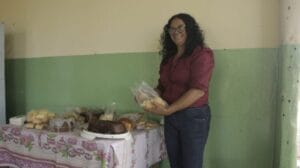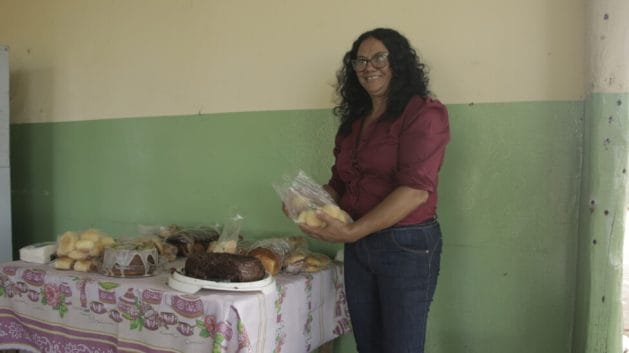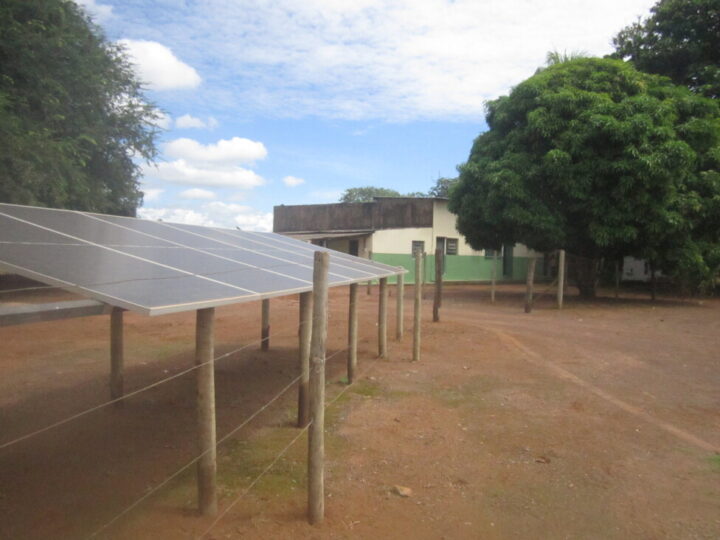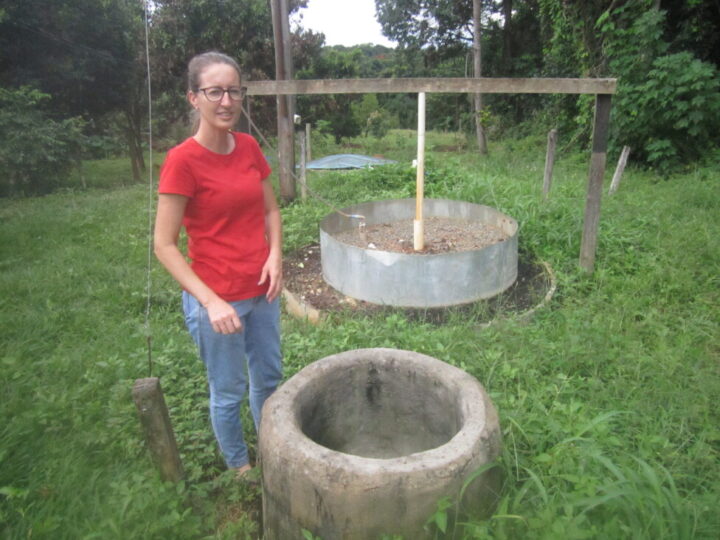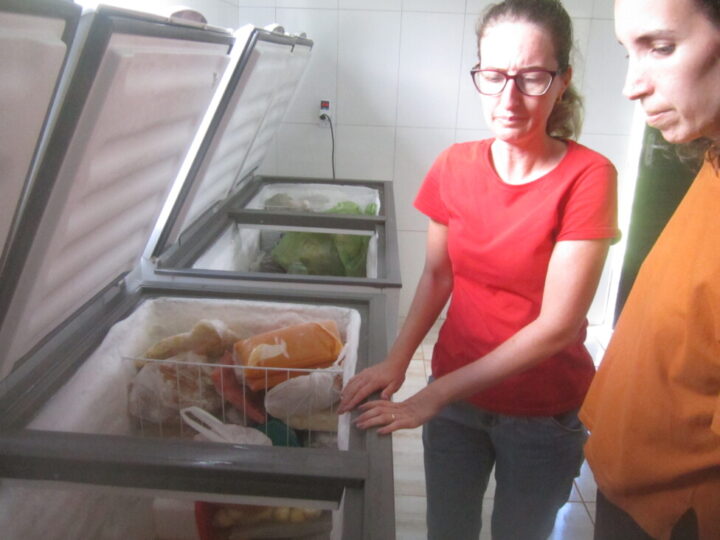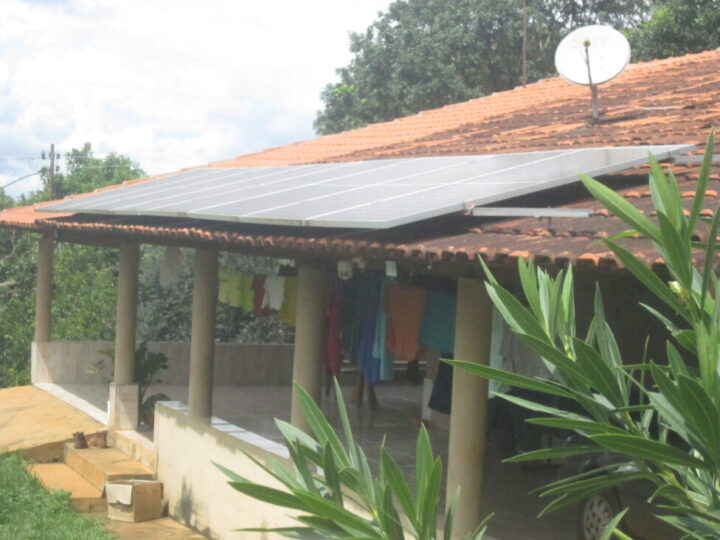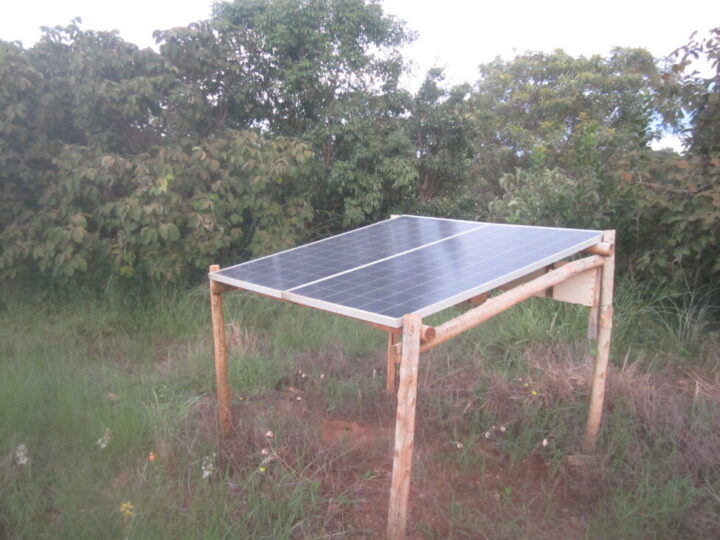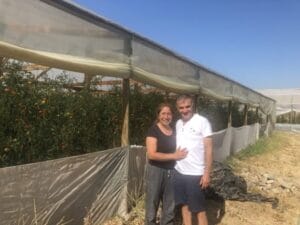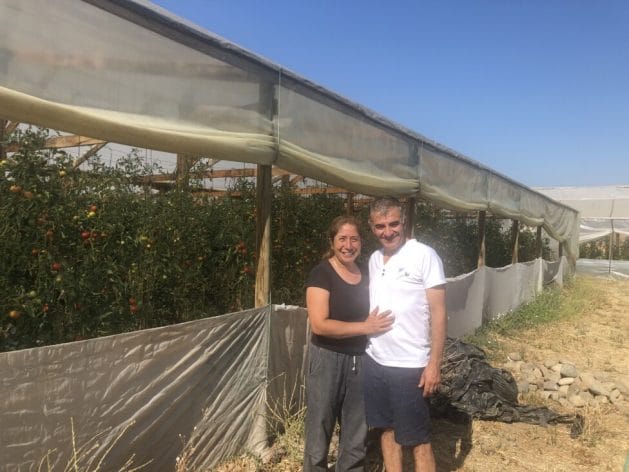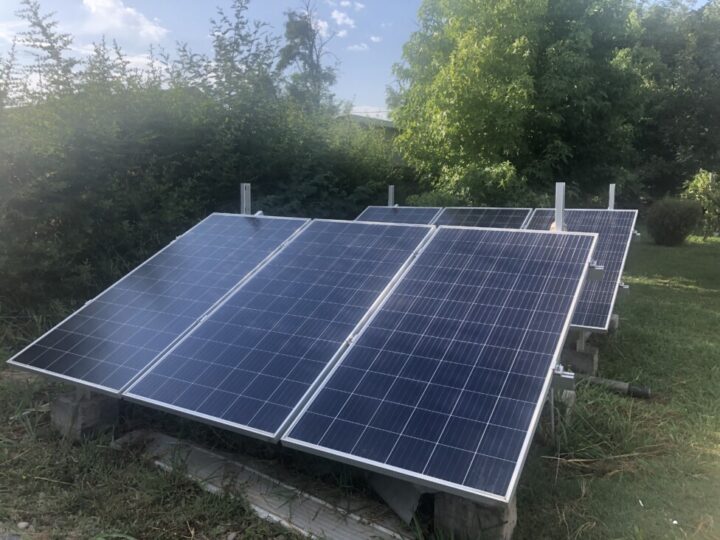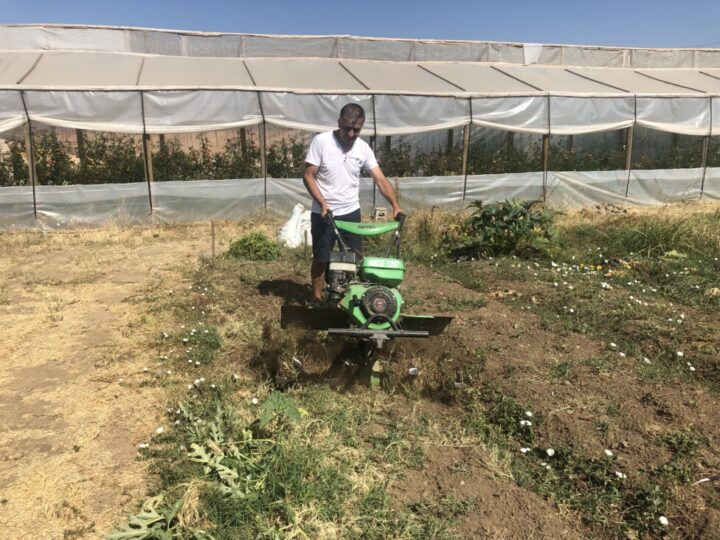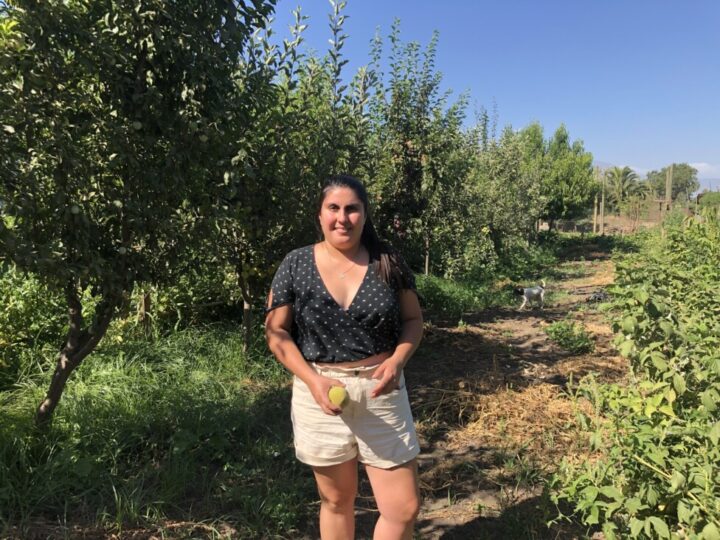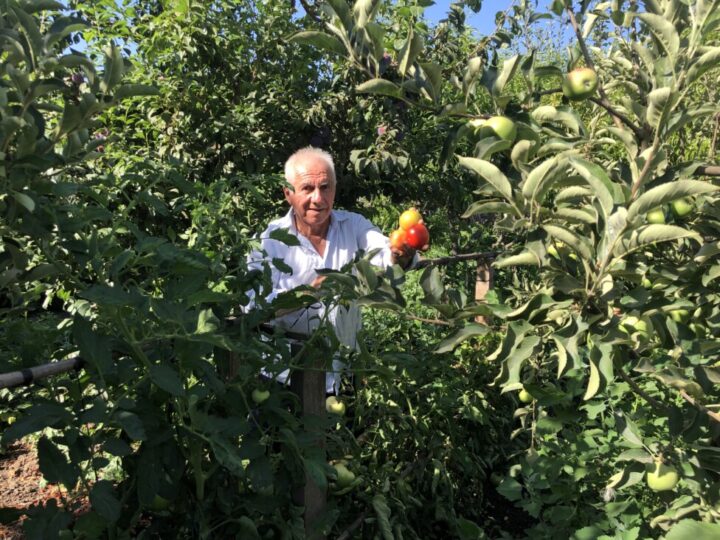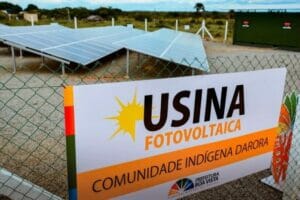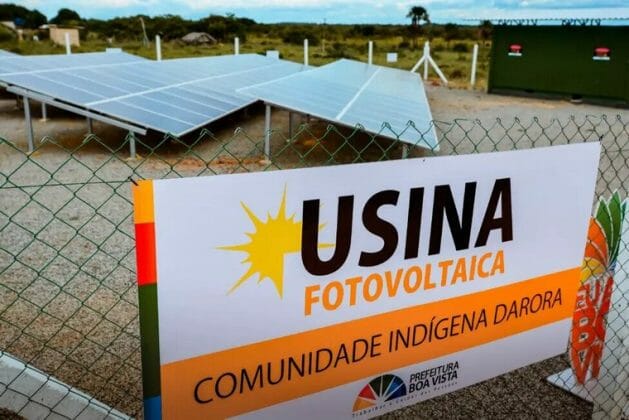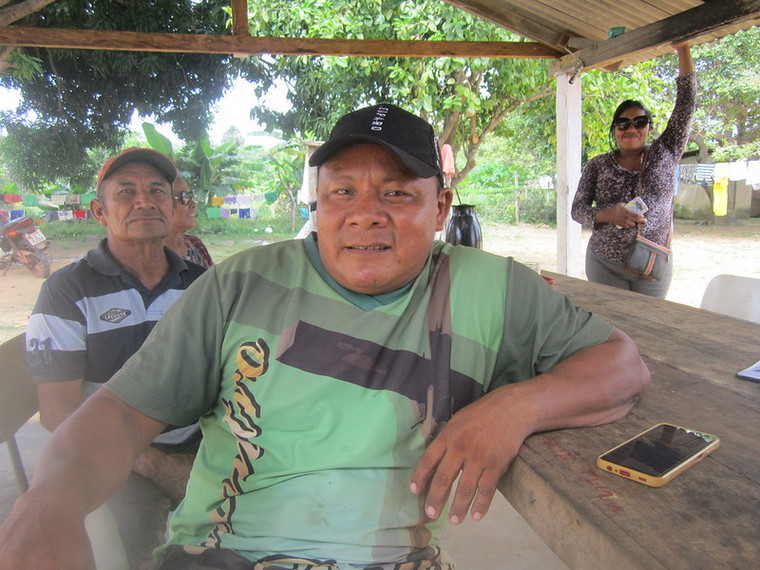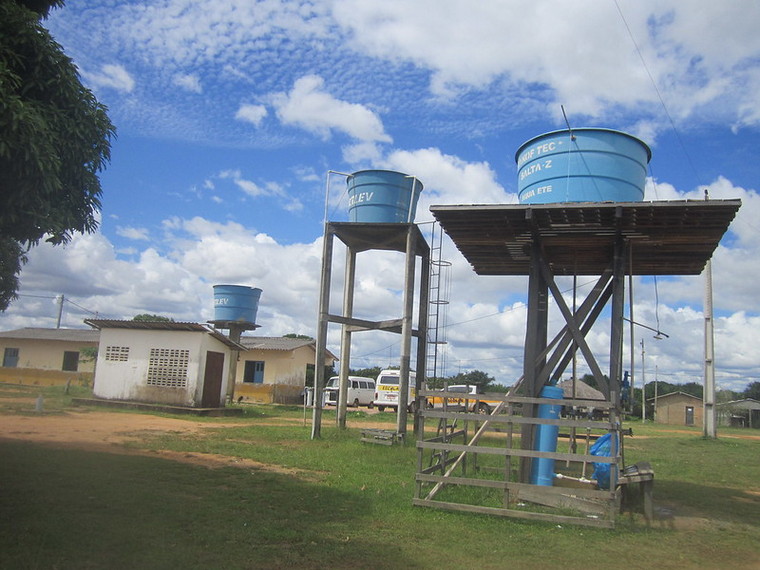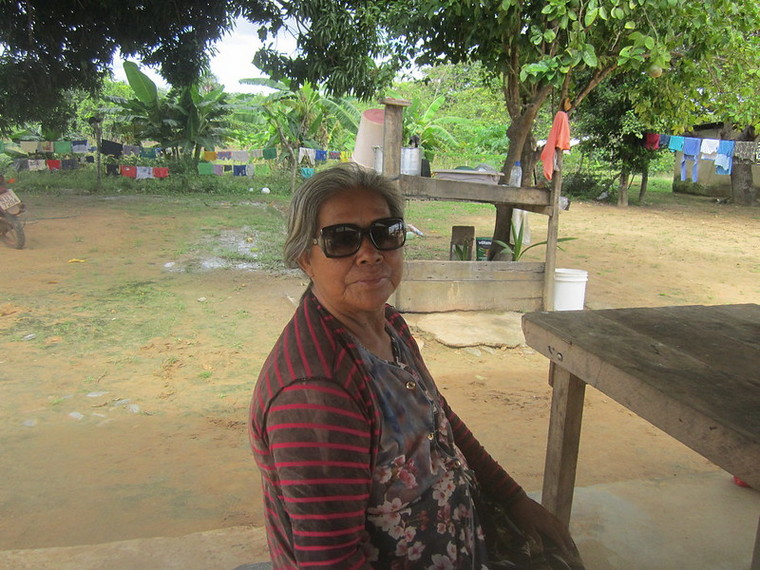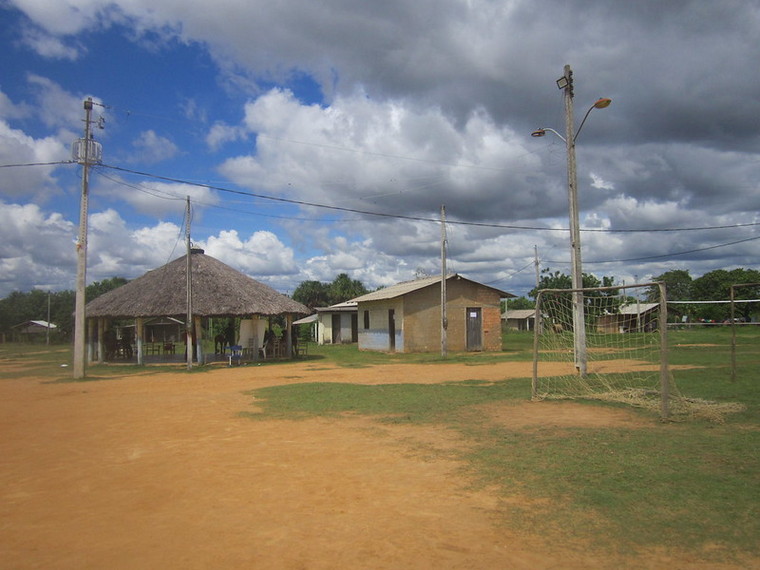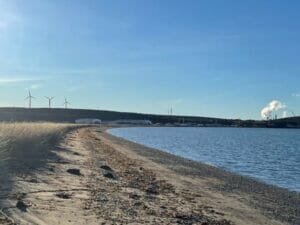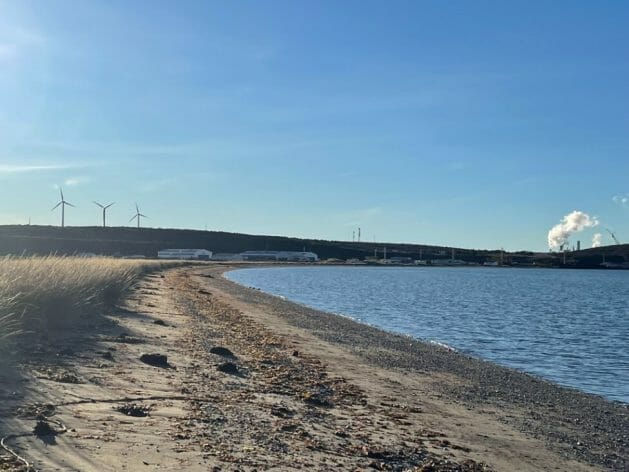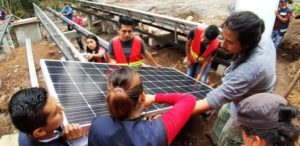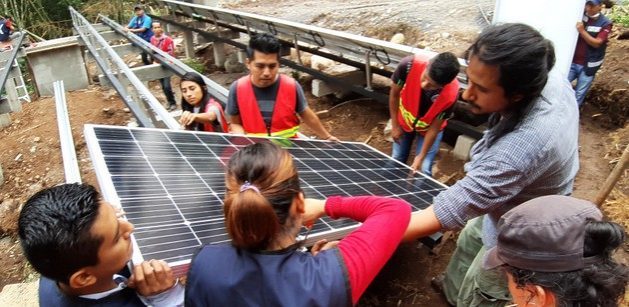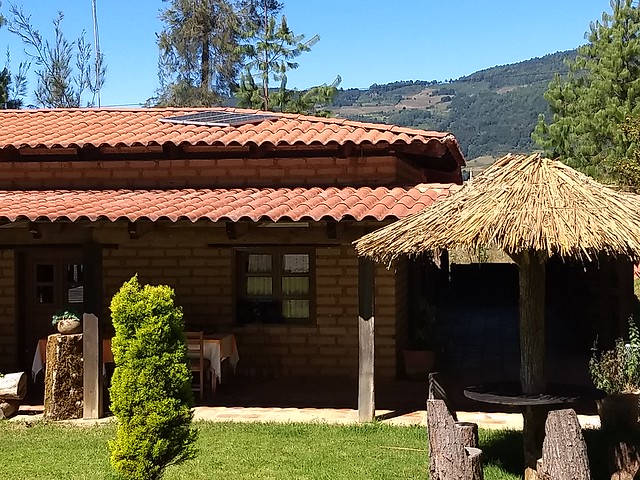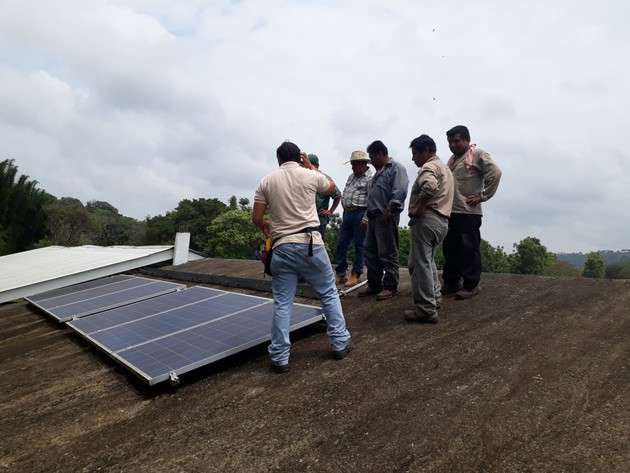Civil Society, Development & Aid, Editors’ Choice, Energy, Headlines, Human Rights, Integration and Development Brazilian-style, Latin America & the Caribbean, Sustainability, Sustainable Development Goals, Women & Economy
More than 30 solar panels power the pumping plant in the village of El Mozote, in eastern El Salvador, providing water to around 360 families. Credit: Edgardo Ayala / IPS
– The worst massacre of civilians in Latin America occurred in the Salvadoran village of El Mozote, where environmental projects are beginning to emerge, slowly fostering awareness about protecting the natural resources of this deeply symbolic site, embedded in the country’s historical memory.
Since early 2024, a small photovoltaic plant has been operating in El Mozote, in the district of Meanguera, eastern El Salvador, powering a municipal water system designed to supply around 360 families in the village and nearby areas.
“We used to wash clothes in those communal wells, which were built after the war, in ’94.” — Otilia Chicas
“The project’s goal was to minimize environmental impacts in the area by seeking cleaner energy sources, and with that in mind, the solar panel system was implemented,” Rosendo Ramos, the Morazán representative of the Salvadoran Health Promotion Association (ASPS), the NGO behind the project, explained to IPS.
The Spanish organization Solidaridad Internacional Andalucía also participated in launching the initiative.
El Mozote is located in the department of Morazán, a mountainous region in eastern El Salvador. During the civil war (1980-1992), the area was the scene of brutal clashes between leftist guerrillas and the army.
In December 1981, over several days, military units massacred around 1,000 peasants in the village and neighboring communities—including pregnant women and children—accusing them of being a support base for the rebels.
The conflict is estimated to have left more than 75,000 dead and 8,000 disappeared.
The photovoltaic system installed in El Mozote, eastern El Salvador, operates alongside the national distribution grid, so on cloudy days with low solar generation, the conventional power grid is activated. Credit: Courtesy of ASPS
Sunlight to Distribute Water
The solar project consists of 32 panels capable of generating a total of 15 kilowatts—enough to power the equipment, primarily the 60-horsepower pump that pushes water up to the tank installed atop La Cruz mountain. From there, water flows down to households by gravity.
The photovoltaic system operates alongside the national power grid, so on cloudy days with low solar output, the conventional grid kicks in—though the goal is obviously to reduce reliance on it.
The project, costing US$28,000, was funded by the European Union as part of a larger environmental initiative that also included two nearby municipalities, Arambala and Jocoaitique, focusing on protecting the La Joya Pueblo micro-watershed.
Key aspects of the broader program include reducing the use of agrochemicals, plastic, and other disposable materials; and promoting rainwater harvesting.
The overall program reached 1,317 people (706 women and 611 men) across three municipalities and six communities, involving NGOs, schools, and local governments.
“The aim is to consume less energy from the national grid, thereby lowering pumping costs,” explained Ramos.
However, this cost reduction doesn’t necessarily translate into lower water bills for families in El Mozote and surrounding areas. That’s because the water system is municipally managed, and tariffs are set by local ordinances, making adjustments difficult—unlike community-run projects where residents and leaders can more easily agree on changes.
One benefit of the new system is that lower energy costs for the municipality free up funds to expand and improve other basic services—not just in Meanguera but also in places like El Mozote, Dennis Morel, the district director, told IPS.
The plaza of El Mozote, the iconic village in eastern El Salvador, was renovated, but local residents complain that the government-led construction work was not agreed upon with the community. Credit: Edgardo Ayala / IPS
Water in the postwar era
Otilia Chicas, a native of El Mozote, recalled what life was like in the village when there was no piped water service—back in the days following the end of the civil war in 1992, when people began returning to the area.
“We used to wash clothes in those communal wells. They were built after the war, in ’94,” said Chicas, pointing toward one of those now-empty wells, about 20 meters away from where she stood, inside a kiosk selling handicrafts, books, and T-shirts in El Mozote’s central plaza.
Next to the plaza is the mural bearing the names of the hundreds of people killed by the army—specifically, by units of the Atlacatl Battalion, trained in counterinsurgency by the United States.
“We used to fetch water from there and bathe there, but since these wells weren’t enough, we’d go to a spring, to ‘El Zanjo,’ as we called it,” she recounted.
She added that the drinking water project arrived between 2005 and 2006, finally bringing the resource directly into people’s homes.
“The community had to pitch in, and the hours people worked were counted as payment, as their contribution,” she noted while weaving colorful thread bracelets.
There is uncertainty over whether the kiosk in the village plaza will be removed. Several women from the El Mozote Historical Committee sell handicrafts and work as tour guides there. Credit: Edgardo Ayala / IPS
Almost No One Was Spared
Chicas, 45, was born in 1980, a year before the massacre. Now, she helps run the kiosk and works as a tour guide alongside other local women from the El Mozote Historical Committee, explaining to visitors the horrific events that took place in December 1981.
The artisan shared that her family lost several relatives in the 1981 massacre, as did nearly everyone here. The victims’ mural is filled with dozens of people bearing the last names Chicas, Márquez, Claros, and Argueta, among many others.
“My grandmother lost four of her children and 17 grandchildren,” she recalled.
Chicas’ father, in an attempt to save their lives, moved his family out of El Mozote before the massacre and resettled in Lourdes Colón, in the western part of the country. But the military ended up killing him in 1983 after discovering he was originally from Morazán and linking him to rebel groups.
“The National Guard came for him and two uncles—they saw they were from Morazán, a guerrilla zone,” she emphasized. “Before killing them, they forced them to dig their own graves. They were left by the roadside, in a place called El Tigre,” she explained.
The military operation that culminated in the massacre was planned and executed by the Salvadoran Army’s High Command, with support from Honduran soldiers and covered up by United States government officials, revealed Stanford University scholar Terry Karl in April 2021.
Karl testified as an expert witness during a hearing on the case held that April in San Francisco Gotera, the capital of Morazán.
Dormant in El Salvador’s judicial system since 1993, the case was reopened in September 2016. Among the accused are 15 soldiers—seven of them high-ranking Salvadoran officers—,the only surviving defendants from the original list of 33 military personnel.
The trial is currently in the investigative phase, where evidence is being gathered and examined before the judge decides whether to proceed to a full public trial.
A mural on the side of El Mozote’s plaza displays the names of the hundreds of people killed by the Salvadoran army in December 1981, marking the largest massacre of civilians in Latin America. Credit: Edgardo Ayala / IPS
Times of Uncertainty
El Mozote’s central plaza has been renovated over the past three years as part of the government’s effort to give it a more orderly and modern appearance—a promise made by President Nayib Bukele when he visited the site in February 2021.
The town is also nearing completion of a Urban Center for Well-being and Opportunities (CUBO)—a government-sponsored community center designed to provide youth with access to reading materials, art, culture, and information and communication technologies.
However, some residents told IPS that these projects are being carried out without prior consultation or agreement with the community, in violation of the 2012 ruling by the Inter-American Court of Human Rights, which called for justice, truth, and reparations for the victims.
The reconstruction work demolished the bandstand, a space highly valued by the community as a gathering place for meetings and collective organizing.
Despite this, Chicas said she supports the plaza’s renovations, as they have made it more inviting for young people to spend time there. Still, she noted that the remodeling affected her personally.
The construction forced her to dismantle her small food stall, made of corrugated metal sheets, where she used to make and sell pupusas—El Salvador’s most iconic dish, made of corn and stuffed with beans, cheese, or pork.
Chicas also mentioned the ongoing uncertainty about whether the kiosk where she and other women craft and sell their handicrafts will be removed.
“We’re left in limbo—we don’t know what’s going to happen,” she said.

